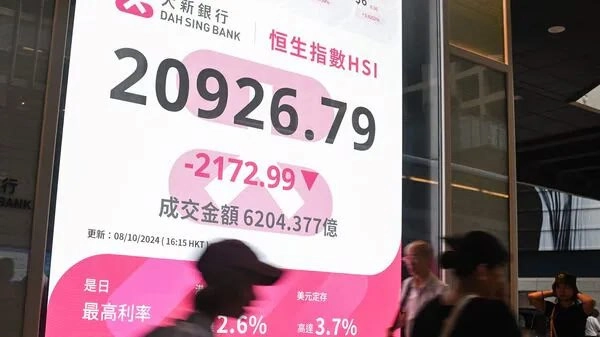
Mortgage Rates Surge to 6.93%: What This Means for Homebuyers and Sellers
2025-01-09
Author: Chun
As we stepped into October, the hope of declining mortgage rates that had been rising since the summer seems to be fading. The average rate on a 30-year mortgage, the most popular home loan in the United States, jumped to 6.93% this week—the highest it has been since July, according to Freddie Mac.
Why have rates shot up?
It seems to follow the trend of the 10-year Treasury bond yields, which have also climbed due to a series of strong economic data, ongoing inflation worries, and looming fiscal policies anticipated from the upcoming Trump administration. “The economy remains resilient, while inflation numbers are not dropping as rapidly as many had anticipated,” explains Stijn Van Nieuwerburgh, a Columbia University professor in real estate and finance.
Treasury Yield Increases
This week also marked a notable increase in the 10-year Treasury yield, briefly surpassing 4.7%. This rise coincides with reports of growth in the U.S. services sector and President-elect Trump’s re-emphasis on tariffs on various imports, which could further fuel inflation.
Federal Reserve Actions
Despite attempts by the Federal Reserve to combat inflation by cutting interest rates last year, these efforts have not fully contained the price hikes. The Fed, while reducing rates three times last year, has indicated only two cuts for this year. This situation has led to a rise in mortgage rates, as investors focus more on future economic conditions rather than current Fed actions.
Market Analyst Insights
Greg McBride, chief financial analyst at Bankrate, notes that concerns about inflation and government borrowing have contributed to the upsurge in long-term interest rates, negatively impacting mortgage rates. McBride anticipates mortgage rates leveling off at around 6.5% by the end of 2025.
Housing Market Stagnation
The housing market is currently in a state of stagnation. Over the past couple of years, rising mortgage rates—peaking near 8% in 2022 and 2023—have created a sense of entrapment for many homeowners. With historical low rates of roughly 3% established during the pandemic, many are hesitant to sell their homes, exacerbating the supply crunch and keeping home prices elevated. This has created a challenge for buyers facing the double-whammy of escalating mortgage rates and steep home prices.
Shifting Buyer Sentiment
Buyers and sellers may need to recalibrate their expectations in the current climate of elevated borrowing costs. Real estate agent Heather Mahmood-Corley from Phoenix notes a shift in buyer sentiment: “I’ve had clients express readiness to purchase a home regardless of current borrowing costs, signaling a change in outlook.”
Economic Stability Insights
While the uncertainty around new administration policies has kept many on the edge, the broader economic stability—including a notable 4.8% increase in existing home sales in November—indicates a market vigor supported by job and income growth. “It’s vital to recognize that this isn’t a scenario where we can simply wait for mortgage rates to dramatically decline,” warns McBride.
Conclusion
In conclusion, while homebuyers and sellers navigate this challenging landscape, those looking to make moves must be equipped with realistic expectations about interest rates, market conditions, and the evolving economic climate. As many brace for potential borrowing challenges ahead, the real estate market continues to present both obstacles and opportunities for savvy participants.




 Brasil (PT)
Brasil (PT)
 Canada (EN)
Canada (EN)
 Chile (ES)
Chile (ES)
 Česko (CS)
Česko (CS)
 대한민국 (KO)
대한민국 (KO)
 España (ES)
España (ES)
 France (FR)
France (FR)
 Hong Kong (EN)
Hong Kong (EN)
 Italia (IT)
Italia (IT)
 日本 (JA)
日本 (JA)
 Magyarország (HU)
Magyarország (HU)
 Norge (NO)
Norge (NO)
 Polska (PL)
Polska (PL)
 Schweiz (DE)
Schweiz (DE)
 Singapore (EN)
Singapore (EN)
 Sverige (SV)
Sverige (SV)
 Suomi (FI)
Suomi (FI)
 Türkiye (TR)
Türkiye (TR)
 الإمارات العربية المتحدة (AR)
الإمارات العربية المتحدة (AR)